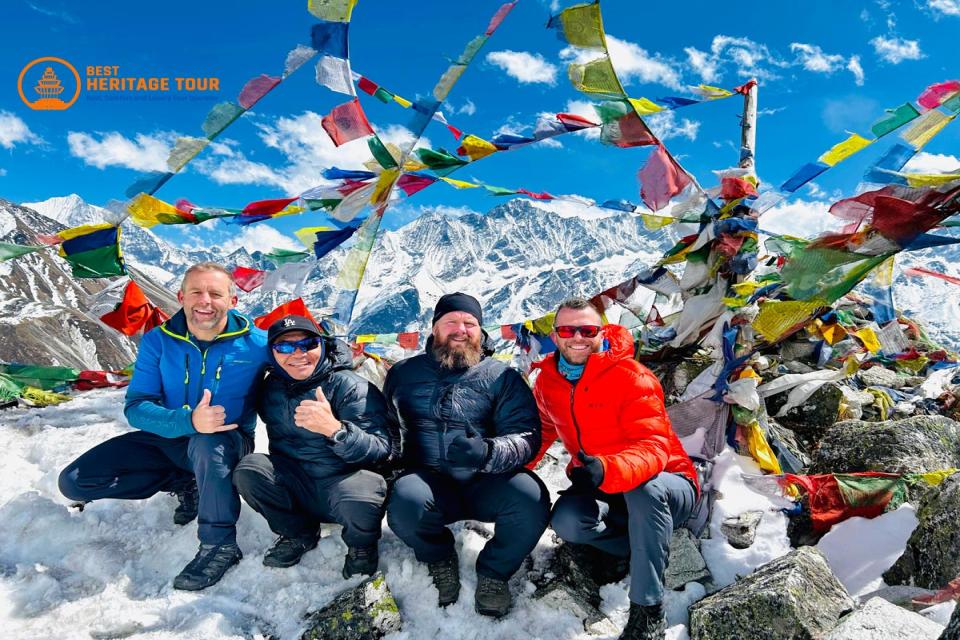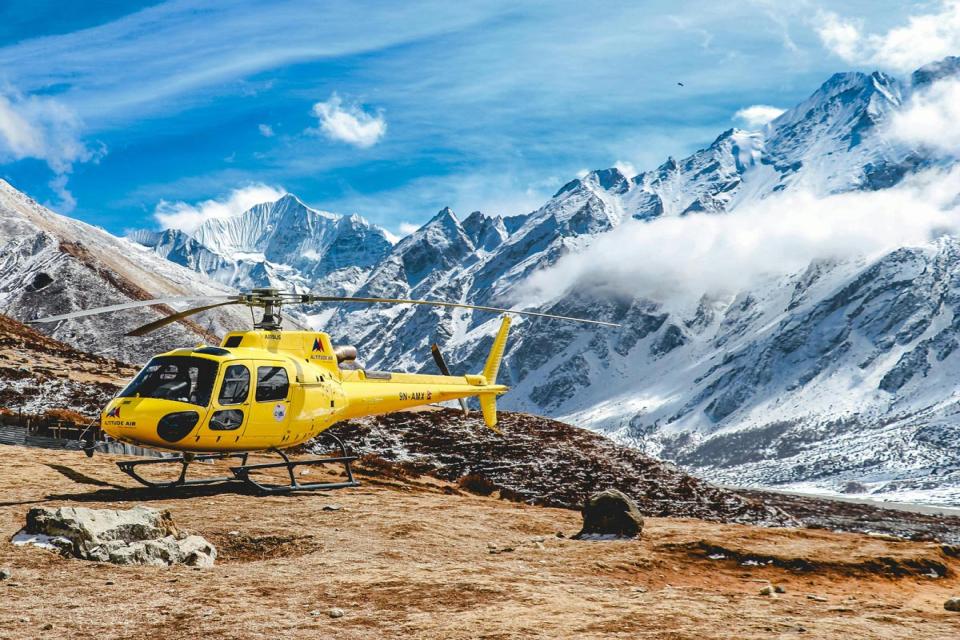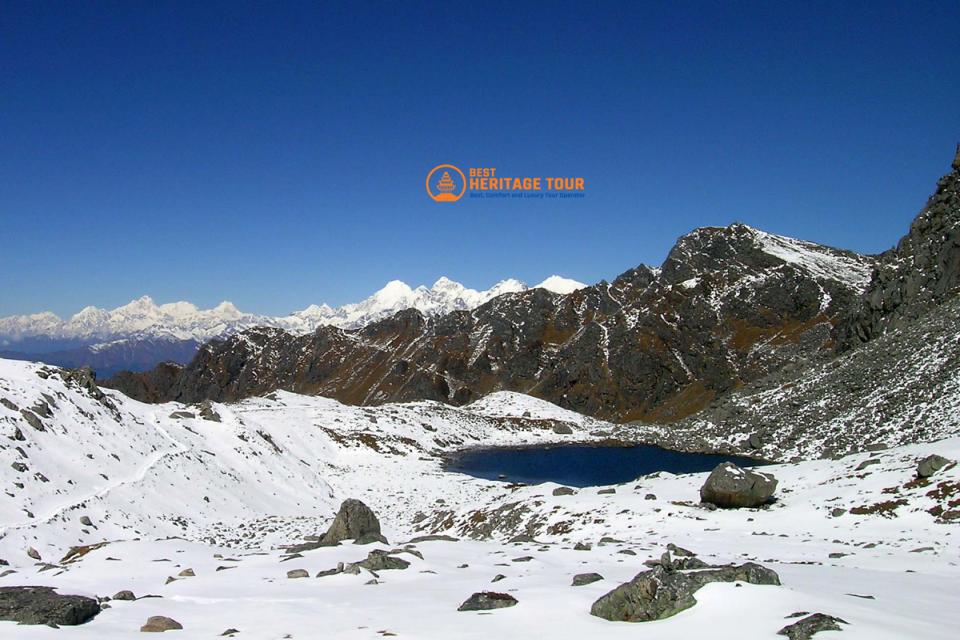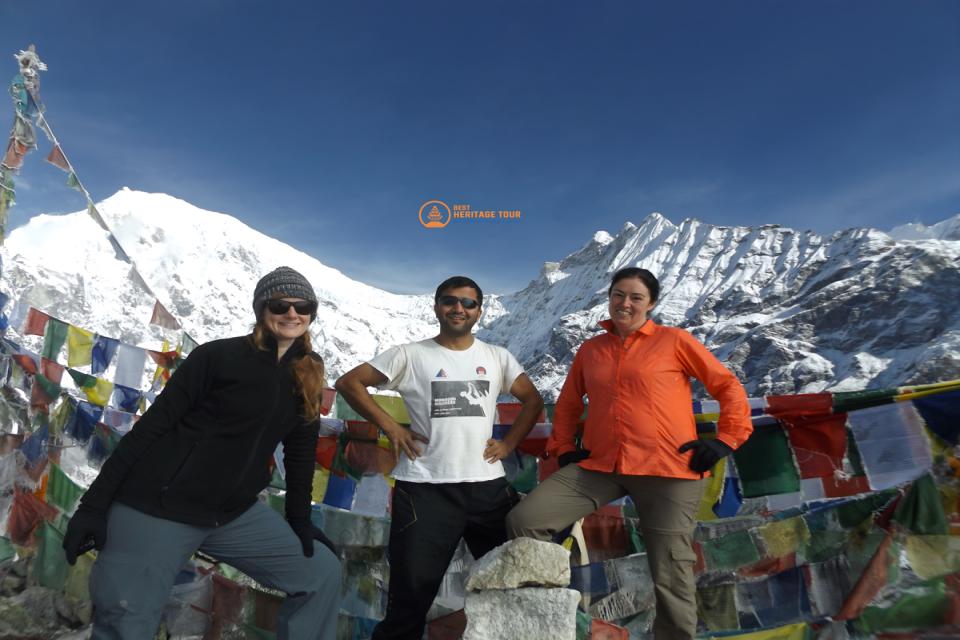Nestled north of Kathmandu, the Langtang Valley Trek is one of Nepal’s most scenic Himalayan journeys - a route that blends cultural charm, alpine landscapes, and authentic mountain village life. While the trail is popular in spring and autumn, many adventure enthusiasts are now choosing to explore Langtang Valley in winter, when the Himalayas reveal a pristine white serenity that few other seasons can match.
Trekking the Langtang Valley during the winter months (December to February) comes with its own unique rewards and challenges. From glistening snow-covered peaks to peaceful trails free from crowds, it offers a rare opportunity to witness the raw and silent beauty of the Himalayas. But for those planning their winter adventure, one common question arises - how much snow can you actually expect during the Langtang Valley Trek in winter?
This comprehensive guide by Best Heritage Tour, a trusted local trekking company in Nepal, offers detailed insights into snowfall, temperatures, trail conditions, and practical tips to help you prepare for an unforgettable winter trekking experience.
Why Consider Langtang Valley Trek in Winter?
Winter is often overlooked by trekkers who fear the cold or heavy snowfall. However, for those seeking solitude, crystal-clear mountain views, and an authentic Himalayan experience, winter is a surprisingly rewarding season.
Langtang, located just 61 kilometers north of Kathmandu, sits close to the Tibetan border and lies within the Langtang National Park. Despite its proximity to the capital, the region feels remote and untouched. During winter, the local Tamang and Sherpa villages maintain their daily rhythms, offering warm hospitality to the few adventurers who visit.
With Best Heritage Tour, trekkers can experience a well-organized itinerary ensuring safety, comfort, and flexibility to adapt to winter conditions. The trails remain accessible most of the season, and while temperatures drop, the skies are often clearer, gifting trekkers mesmerizing panoramas of Langtang Lirung (7,227 m) and the surrounding peaks.
Langtang Valley Winter Overview (December - February)
The winter months in Langtang are cold but stable. The region’s climate varies depending on altitude - starting from Syabrubesi (1,460 m) to Kyanjin Gompa (3,870 m) and higher viewpoints like Tserko Ri (4,984 m).
Below is a general overview of the temperature and snow conditions by month:
|
Month |
Average Day Temperature |
Average Night Temperature |
Snowfall Level |
Trail Accessibility |
|---|---|---|---|---|
|
December |
5°C to 10°C |
-5°C to -10°C |
Light to Moderate Snow (from Kyanjin upwards) |
Open & Passable |
|
January |
0°C to 7°C |
-10°C to -15°C |
Moderate to Heavy Snow (above 3,500 m) |
Some Sections Slippery |
|
February |
3°C to 9°C |
-6°C to -12°C |
Light Snow, Melting Begins |
Mostly Open |
Snow Highlights
-
Early December: Thin snow dusting around Langtang Village and Kyanjin Gompa.
-
Mid-January: Deep snow accumulation near Tserko Ri and higher ridges; scenic white valleys.
-
Late February: Warmer days with melting snow; ideal for photography and clearer trails.
These conditions can vary yearly depending on weather patterns, but with professional guidance from Best Heritage Tour, trekkers can adjust their schedules to ensure safe and enjoyable trekking experiences throughout the season.
Trail Conditions: What to Expect Under Snow
The Langtang Valley Trek begins at Syabrubesi, gradually ascending through villages like Lama Hotel, Langtang Village, and Kyanjin Gompa. In winter, each section of the trail presents different conditions:
1. Syabrubesi to Lama Hotel (1,460 m - 2,470 m)
This lower section remains largely snow-free throughout most of December and early January. However, mornings can be frosty, and the shaded forest paths may have icy patches. Rivers and waterfalls freeze partially, creating a serene winter landscape.
2. Lama Hotel to Langtang Village (2,470 m - 3,430 m)
This stretch begins to show signs of light snow. Trekking poles and good boots are essential here. The path passes through dense rhododendron forests and open meadows that glisten under thin layers of frost.
3. Langtang Village to Kyanjin Gompa (3,430 m - 3,870 m)
This is where you’ll encounter significant snow accumulation. The open valley is wind-exposed, and fresh snow can cover the trail overnight. Local guides from Best Heritage Tour often start early in the morning to avoid midday melting that can make paths slippery.
4. Side Trip to Tserko Ri (4,984 m)
This viewpoint is the highlight of the trek, but during deep winter (January), snow can reach up to your knees. The ascent requires caution, but the reward - a 360° view of the Langtang range blanketed in snow - is nothing short of breathtaking.
How Much Snow Should You Expect?
Snow depth in the Langtang Valley varies significantly with altitude and timing:
-
Below 2,500 m: Minimal to no snow accumulation.
-
Between 2,500-3,500 m: Light snow cover ranging from a few centimeters to 10-20 cm.
-
Above 3,500 m: Moderate to heavy snow, typically 30-60 cm, especially around Kyanjin Gompa and Tserko Ri.
Heavy snowfall can occasionally block small sections for a day or two, but local lodges and guides quickly restore accessibility. Best Heritage Tour monitors the weather closely and reschedules treks if needed, ensuring your journey continues smoothly and safely.
Winter Trekking Experience: The Scenic Advantage
One of the biggest perks of trekking in winter is clarity. The cold, dry air ensures sharp visibility, allowing trekkers to enjoy stunning sunrise views over snow-laden peaks. The usual clouds and mists that form during spring and monsoon are absent, giving the Himalayas a crystal brilliance.
Moreover, the absence of large trekking crowds means you can walk in peace, hear the crunch of snow beneath your boots, and truly immerse yourself in nature. Villagers have more time to interact, offering insights into their mountain lifestyle.
Traveling with Best Heritage Tour adds to the comfort - their expert guides know local tea houses that remain open in winter and can arrange warm accommodations even in the coldest months.
Gear Essentials for Langtang Winter Trek
Preparing for snow and sub-zero temperatures is crucial. Here’s a checklist recommended by Best Heritage Tour:
Clothing
-
Down jacket with high insulation
-
Thermal base layers (top and bottom)
-
Fleece mid-layer
-
Waterproof trekking pants
-
Warm gloves, woolen cap, and neck gaiter
Footwear
-
Waterproof trekking boots with good grip
-
Woolen socks (3-4 pairs)
-
Gaiters to prevent snow from entering shoes
Gear
-
Trekking poles (with snow baskets)
-
Sunglasses with UV protection (glare from snow is intense)
-
Sunscreen & lip balm
-
Headlamp (shorter daylight hours)
-
Hot water bottle (available in most lodges)
Carrying proper winter gear ensures comfort and safety, making the experience enjoyable even when snow covers the trail.
Accommodation and Food During Winter
Despite being off-season, most tea houses in Langtang remain open year-round. The hospitality of the locals ensures trekkers find warm meals and cozy rooms even when temperatures drop outside.
Expect wood stoves in dining areas, hearty local dishes like dal bhat, noodle soup, potato curry, and tea or hot chocolate to keep you warm. While facilities may be basic, Best Heritage Tour pre-books the best available lodges to guarantee reliable accommodation throughout the route.
Safety & Tips for Trekking in Snow
Winter trekking requires extra preparation and awareness. Follow these expert recommendations:
-
Start early: Days are shorter; begin trekking before 8 a.m. to maximize daylight.
-
Layer smartly: Avoid sweating too much - moisture can lead to chills when you stop.
-
Check weather updates: Local guides always communicate with village contacts about snowfall forecasts.
-
Stay hydrated: Cold weather often masks thirst. Drink plenty of warm fluids.
-
Acclimatize properly: Even in winter, altitude sickness can occur above 3,000 m. Ascend gradually.
With experienced guides and proper preparation, winter trekking in Langtang Valley is safe, beautiful, and deeply memorable.
Final Thoughts: A Winter Wonderland Worth Exploring
The Langtang Valley Trek in winter is not just a journey through snow and silence - it’s a walk through the heart of the Himalayas when nature rests in pure tranquility. The snow may challenge your steps, but it rewards your spirit with unmatched peace, beauty, and authenticity.
For those willing to embrace the cold, this trek offers something special - an intimate encounter with the mountains far from the crowds of spring and autumn. With proper preparation, guidance, and support from Best Heritage Tour, trekking Langtang Valley in winter becomes an unforgettable Himalayan experience.
Book Your Langtang Winter Adventure Today
Experience the serene side of the Himalayas this winter with a professionally guided Langtang Valley Trek organized by Best Heritage Tour.
For inquiries and bookings, reach out to us today:
Phone/ WhatsApp/ Viber: +977-9851149197 / +977-9810043046
Email: info@bestheritagetour.com / bestheritagetour@gmail.com
Website: www.bestheritagetour.com
Office: Thamel Marg, Kathmandu, Nepal
Author: Best Heritage Tour
Date: 3rd November, 2025





